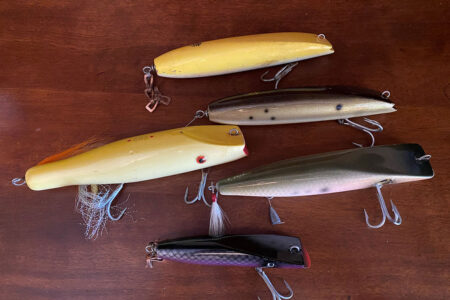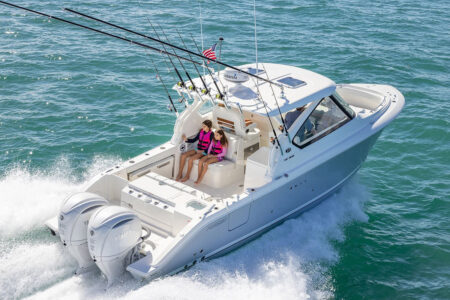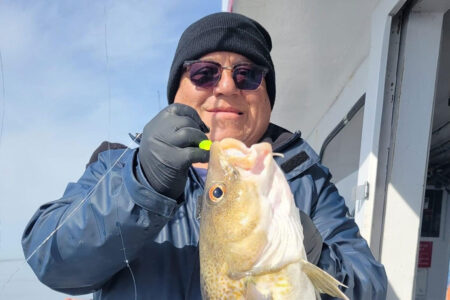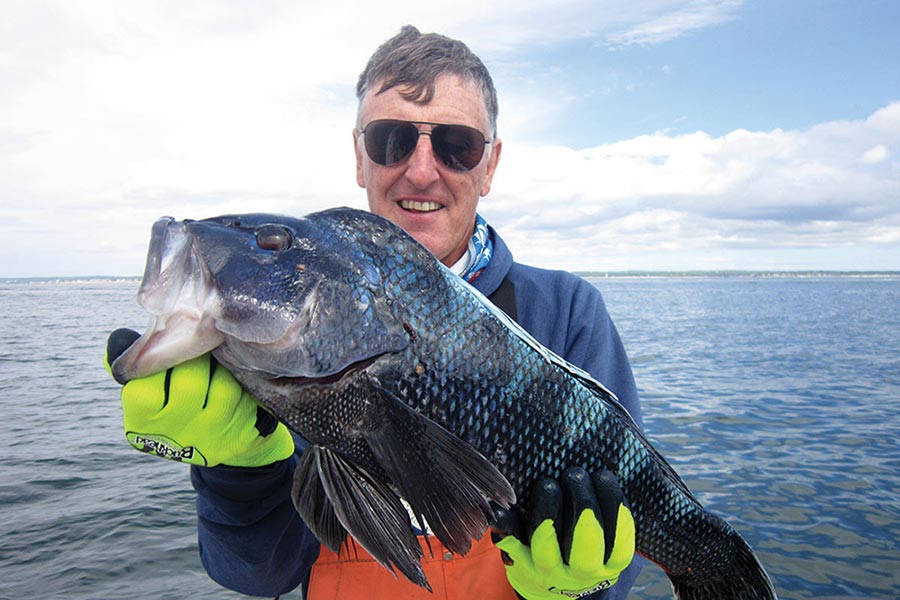
With black sea bass, scup, striped bass and bluefish prevalent throughout the Bay, now is the time to get in on the action.
If you are looking for variety and lots of action in the saltwater fishing world of southern New England, there is no better place to fish than Buzzards Bay. From late spring through early summer the bay is hopping with some of the fastest action you’ll find anywhere for black sea bass, scup, bluefish and striped bass.
Buzzards Bay has a growing reputation as the black sea bass capital of the East Coast. Schools of spawning fish flood into this Bay in astounding numbers. It’s not unusual to get on a bite where it is one fish after another for hours. I’ve seen late May and June days in which this goes on for miles. It makes one wonder if the bottom is paved with these fish.
My brother and I fish here often in late spring and early summer. Our routine is generally the same every time we launch the boat: target black sea bass first, catch our fill of these while getting a few big ones to take home to eat, and then later, we look for other prevalent species of fish such as stripers and blues.
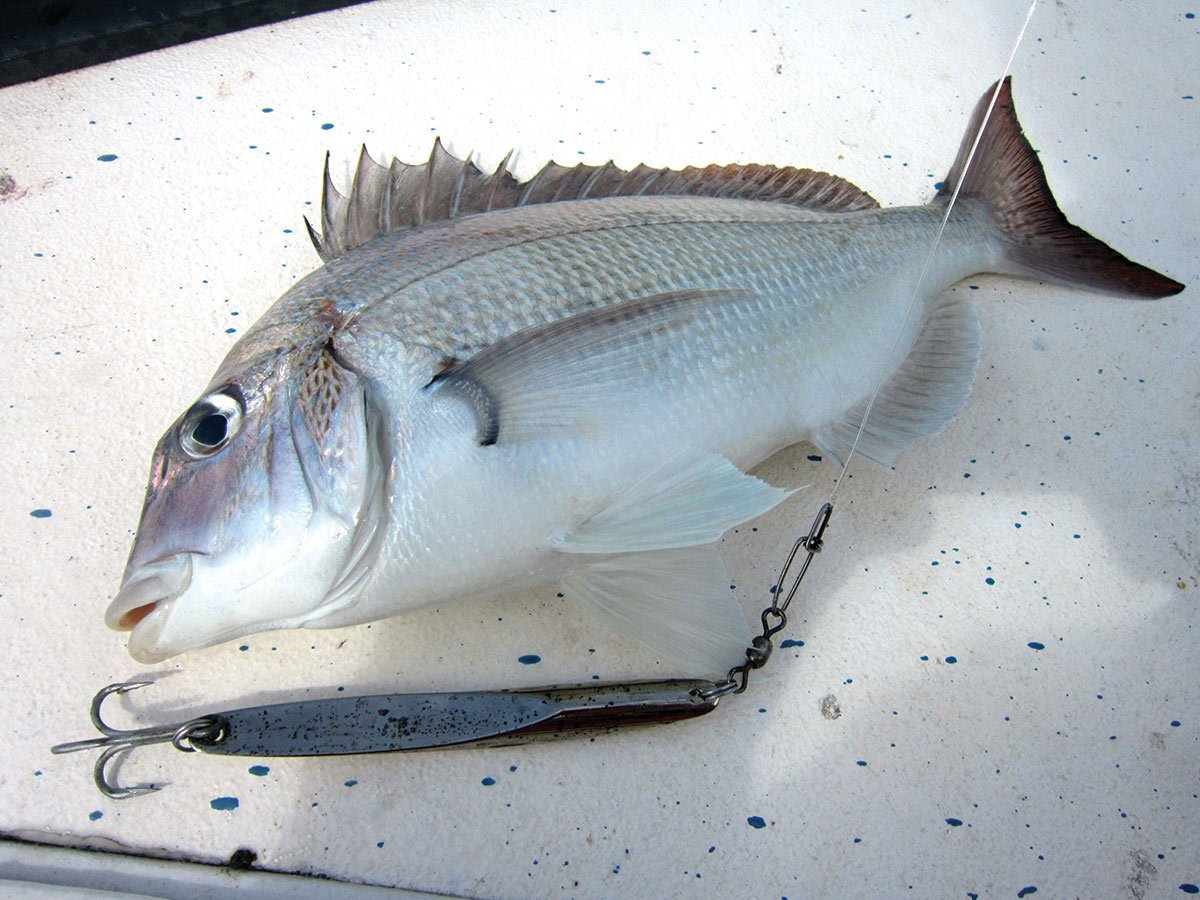
The black sea bass usually reside in big schools in deeper water and along shelves, ledges and channel edges in Buzzards Bay. Twenty to 50 feet of water seems to be their preferred depth, but at times they can be found both shallower and deeper. As you motor slowly, keep one eye on the fishfinder as massive schools of these fish will light up the electronics. If you arrive later in the day you can often find the fish by simply looking for a fleet of boats.
Jigging with artificials is our preferred way to target sea bass. I like to use skinny metal like a Kastmaster XL or a Deadly Dick. The size of the skinny metal will depend on the speed of the drift as well as the depth of the water. My brother, Steve, prefers to use a large Spro bucktail jig that he spices up with a squid strip. We drop these offerings to the bottom and simply jig the rod up and down to give the lures action. Expect many of the hits to come as the jig or metal is falling downward and strike quickly. Don’t worry if you miss the initial hit, but be ready for a quick follow-up strike because where one can be found, there are often more.
If you really want to go nuts and load up on fish, attach a teaser ahead of your main lure. I use bucktail fly teasers as well as small plastic squids. Both have led to so many double-headers that I usually remove the teaser and use just the single jig. One lure makes catch and release so much easier.
While the numbers of black sea bass in this Bay are impressive, the quality of the fish is what’s truly astounding. Over the years we have landed many sea bass in the 5- to even 7-pound range, and we generally will not keep any fish unless they are well over 20 inches. The state record of 8 pounds, 15 ounces came from this place and we have landed several fish that were close to that size. The real big ones tend to be big humpbacked males that have vibrant blue/green coloring. The black sea bass along here are the most beautiful I have ever seen.
We have also often landed some very big scup in the same places we are jigging for sea bass. These scup that are often the size of small dinner plates can be caught with regularity on the same stuff that the sea bass are hitting.
After we land our fill of black sea bass and scup, we turn our attention to striped bass and bluefish, which can also be very plentiful in late spring. You’ll run into very few fishermen targeting blues and stripers since most of the fishing attention centers on the bottom fish. But, make no mistake about it, Buzzards Bay is a very productive spot for all of these species!
When chasing down stripers and bluefish, we focus mostly on fishing the eastern shore of Buzzards Bay. We work the roughly 12 miles of shoreline that runs from the Mashnee Flats to West Falmouth. This is an area that right away jumps out at you as being “fishy.” The shoreline abounds with structure and current mixed with bottom of sand and small rocks. There are rocky points with massive boulders, boulder fields, numerous outflows and sandy, mellow coves. The area close to shore can be a minefield in spots so proceed with caution along here and keep an eye on the GPS to identify big rocks and obstructions. We generally motor slowly from point to point while casting and plugging along the way.
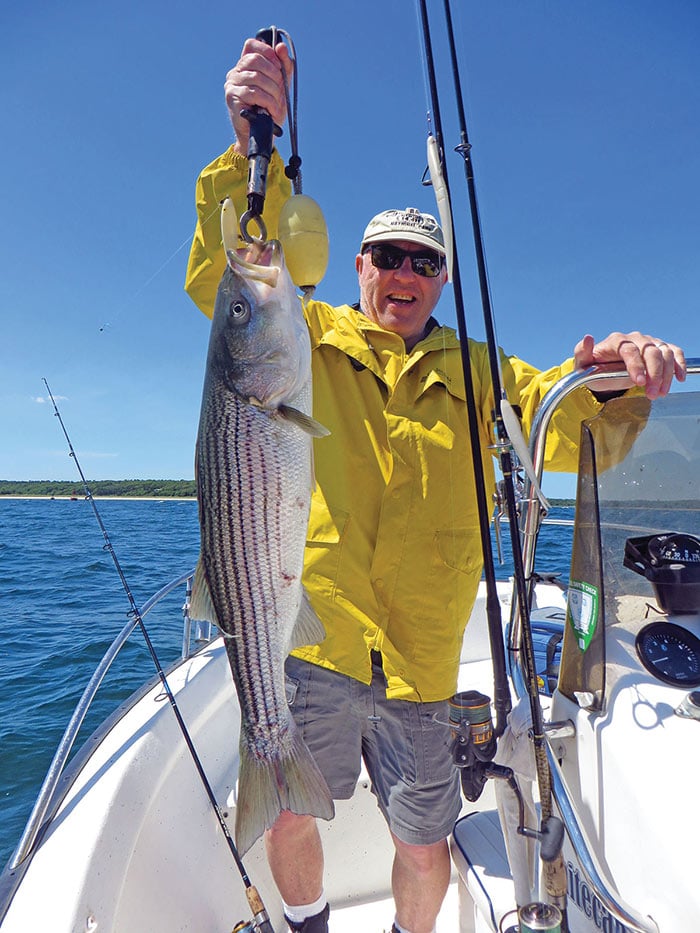
We have had good success catching stripers and blues along here on a couple of lures. Jigs as well as topwater offerings work well. If you are looking to fish the surface, such spook type, pointy-nosed lures like Rebel Jumpin’ Minnows, Super Spooks and Yo-Zuri Hydro Pencils are all good choices, especially in a white color. If the fish are fussy and whirling but not taking, I change over to a 7-1/2-inch Slug-Go twitched on or just below the surface. My brother, Steve, likes to fish a large Super Fluke body in the same way. We cast right into rocks and very close to shore and retrieve them back to the boat. Sometimes the fish prefer bottom bouncing jigs. Both bucktails spiced with plastic curly tails as well as flukes mounted on jigheads work well.
While the stripers tend to hang near structure and close to shore, bluefish can be found just about anywhere when a school of bait comes along. We sometimes find the blues in the middle of the Bay miles from any shoreline feeding on big schools of small sand eels. Last year we found good numbers of bluefish way out in the middle of the Bay near a lighthouse marking Cleveland Ledge. Various schools of blues were busting on the surface along several miles way out that day in the middle of the Bay. They aggressively hit poppers and spooks on the surface even though they were in water that was generally over 50 feet deep.
One final hotspot you have to check out if you fish Buzzards Bay is the Mashnee Flats located at the northeast corner of the Bay. This is a vast area of shallow water where the Cape Cod Canal dumps into Buzzards Bay. The currents roar through here and it can be a dangerous spot especially when the wind comes blasting in from the southwest and roars against a moving current causing severe chop. But, in fairly calm conditions, this place is a Mecca for stripers. We often see birds diving along here with fish breaking beneath them. At times I have witnessed vast schools of stripers swimming below the boat in clear water less than 10 feet deep. We landed many keepers along here last year using topwater plugs and jigs, the same stuff that we used in other parts of the Bay.
If you are looking for some of the fastest boat fishing action for multi species in late spring and early summer, Buzzards Bay has it. The place is best known for its fantastic black sea bass fishing, but other species such as stripers, blues and scup are under the radar, but still abundant. We’ve even caught some sea robins and fluke. It is the best multi-species fishing area to fish that I know of in southern New England from late May through June.

